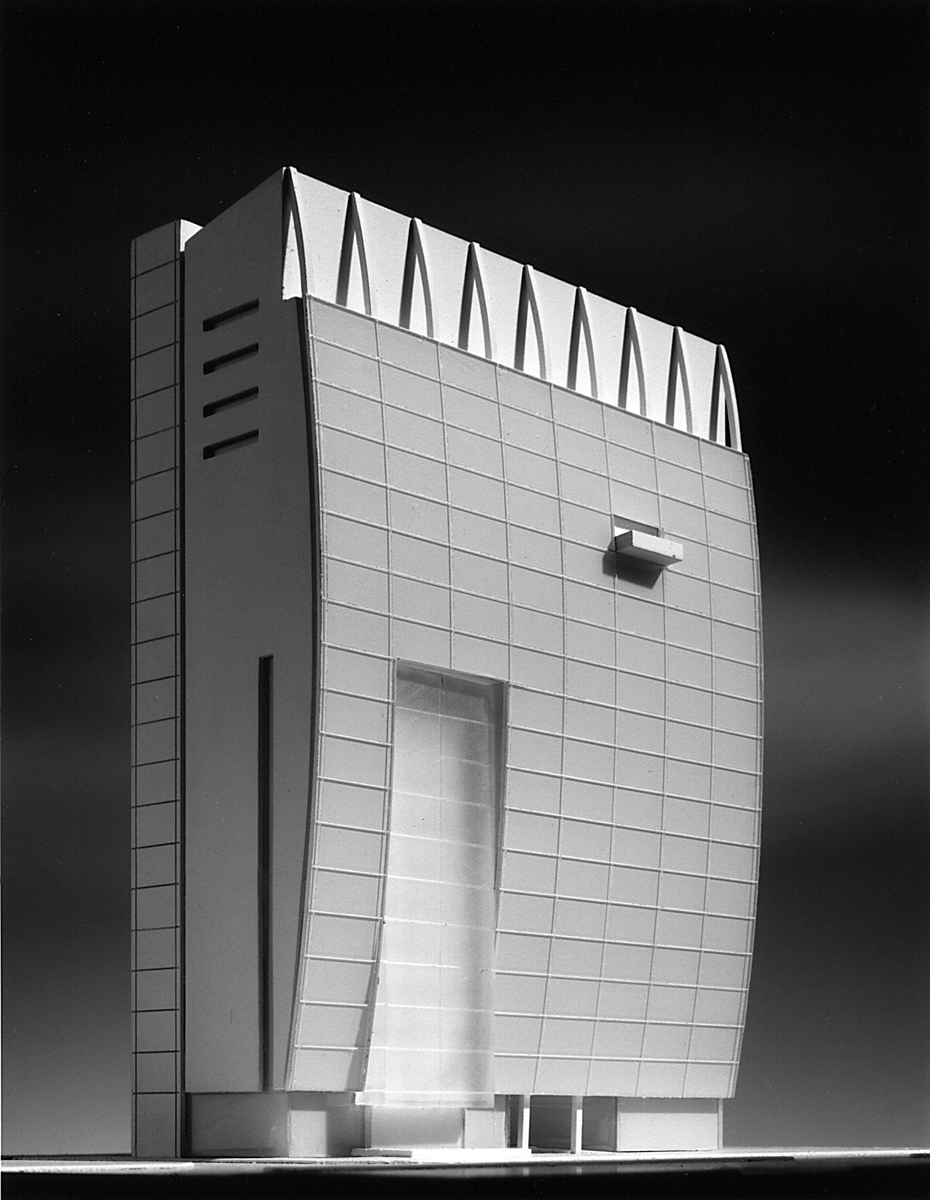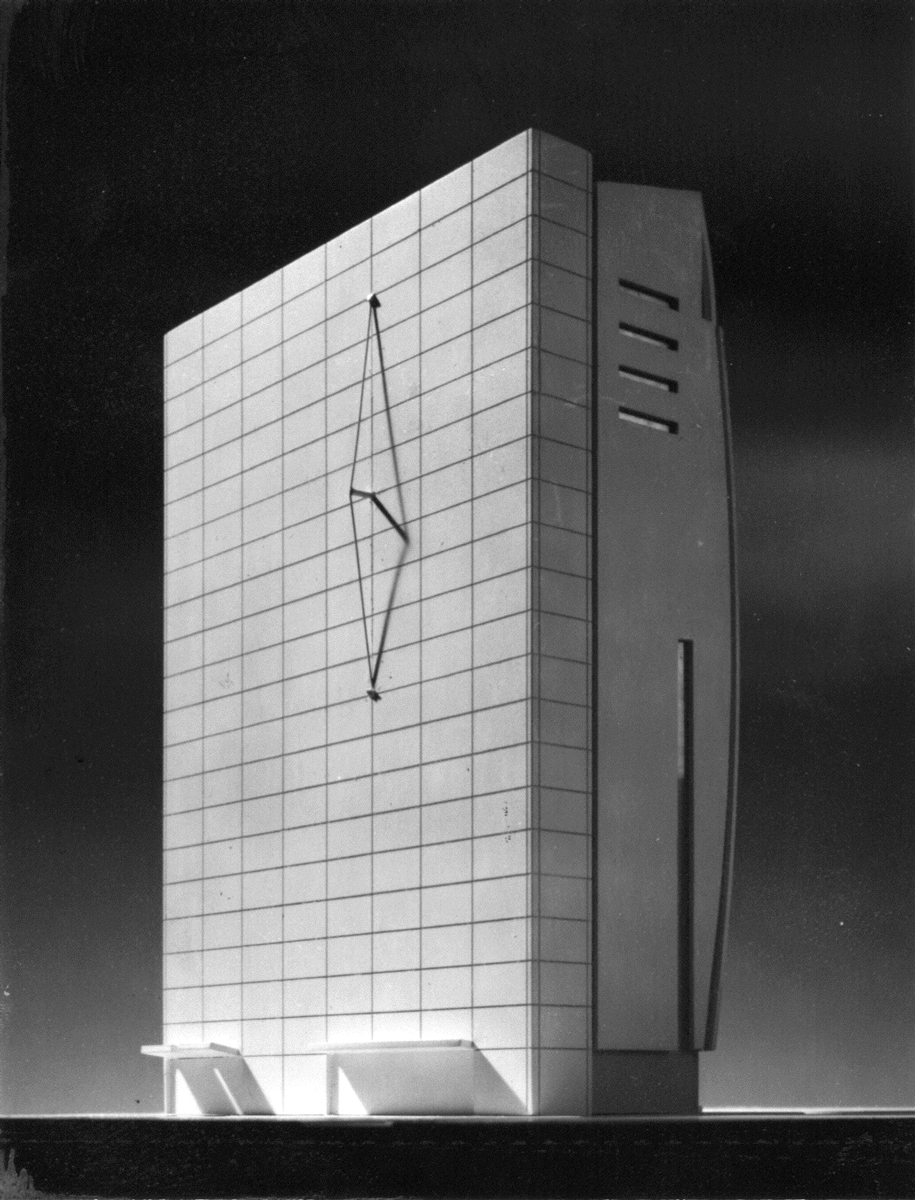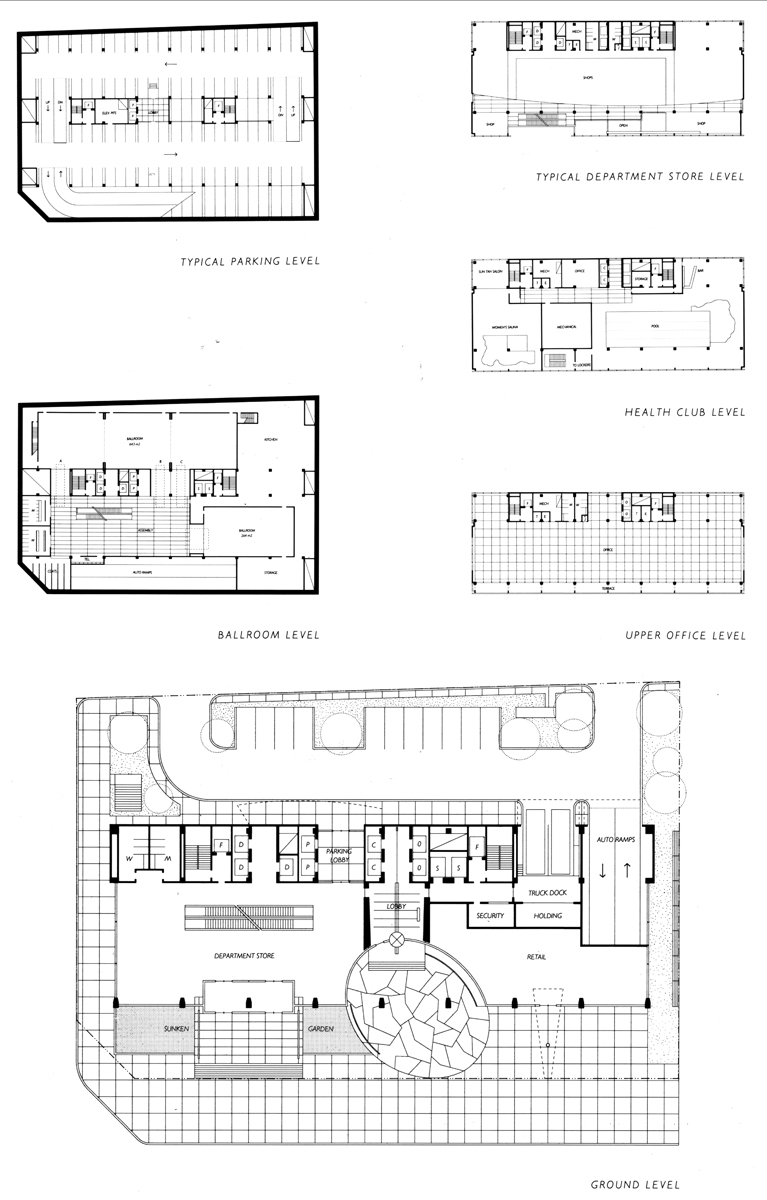The Daichi Dong project is a 60,000 m2 mixed use building located on Teheran Ro, a wide commercial boulevard in Seoul, Korea. The program and the site both suggested a layered organization, with the core displaced to the south and major spaces oriented toward the boulevard and the park beyond.
The frontal plane constitutes the most important layer, creating a loose "street wall" together with other buildings aligned along Teheran Ro. This surface is developed architecturally to give the building a unique character in the context of rather ordinary buildings. Escalators up to the department store, the projecting balcony of the club and the terrace for the offices become the three compositional elements that interrupt the bowing glass surface and symbolically refer to the programmatic elements within.
Mr. Gates acted as lead designer on this project at Kohn Pedersen Fox Associates, PC.
photo by Jock Pottle

The front and rear of the building are designed to contrast with one another. The street facade is bowed, transparent and active, while the rear is taught, reserved and substantially opaque.
photo by Jock Pottle

The slab sits atop a multilevel base containing parking, services and meeting halls. Above the entry level are the department store, health club and offices.

The plans are developed to further the idea of transforming the status of the building as a “packaged” object and to add an experiential quality both externally and internally.
The ground plane is eroded in plan and section in order to maximize the interaction between the street and the building, and to make the numerous entry options legible to visitors.
The “streets” of the Department Store are set back from the bowed surface, creating an arc-shaped atrium containing escalators, special shops and signage. Active visual interaction is thus developed between the shoppers inside and passers-by on the boulevard outside. The club and offices are also organized to take advantage of this same relationship.

KPF - Daichi Dong
Seoul, Korea 1993